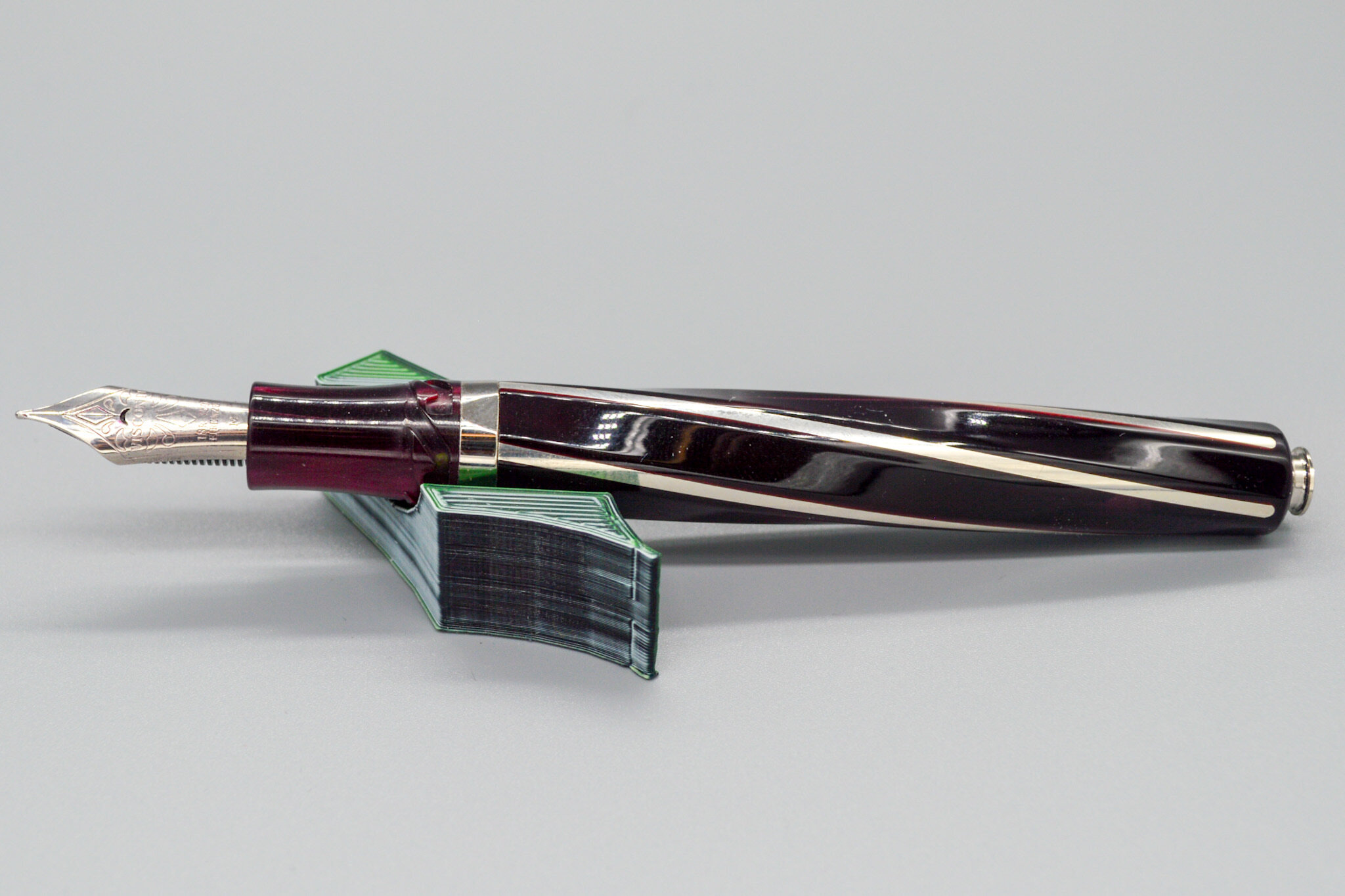Divine Design: the Visconti Divina Elegance
Here in Baltimore, the term “Divine Proportion” conjures up images of the size of a certain beloved drag performer. For the rest of the world, however, it is a reference to the famous golden ratio, which can be expressed as “a is to b as a+b is to a.” I won’t get bogged down too deep into the mathematics of the ratio, but I will say that it is a proportion that human beings tend to find incredibly aesthetically pleasing when followed. If you’ve ever looked at a pen and just inherently felt that the cap looked too big or too small, for example, it is likely that your brain was comparing it against the divine proportion, and determining that it didn’t quite fit.
The Visconti Divina Elegance won’t be setting off any of those mental klaxons, though, because it has been designed with inspiration taken from the golden ratio. Before we dig into that, however, let’s take a look at how the pen arrives. The pen come in Visconti’s standard card-stock box, secured to a tray, with a catalog/warranty booklet underneath. An outer cardboard sleeve protects the box in transit, and denotes the pen model, color, and nib tipping. In this case that would be the Bordeaux color and a medium nib.
The pen underneath this packaging features a faceted cap and barrel. This isn’t an incredibly uncommon design, but what is uncommon is that rather than running straight up and down the length of the pen, these facets flow around the barrel and cap, in a manner meant to evoke the spiral shell of a nautilus. This effect is achieved using a CNC turned acrylic material, which features some stunning depth. A tarnish-resistant silver alloy is used for the trim inlays to accent the corners of the facets, giving the pen an overall look that very much lives up to its “Elegance” name, as my friend Adam pointed out on the Bertram’s Inkwell blog.
The filling mechanism was one of the elements of this pen that surprised me. I knew from pictures that there was no break in the design for a blind cap to unscrew, like Visconti’s high-end vacuum power fillers. That is because this is not a power filler pen, but rather it is a piston filling pen. The piston knob is hidden at the bottom of the barrel, and requires the user to pull it out when they wish to use it and to push it back in when they are done. I love little mechanisms like this, where Visconti could have tried to put a smaller stationary piston knob on the end of the barrel, but decided instead to go for something much more involved, and therefor more fun. I will say, it would have been even more ideal if the knob was somehow spring loded so that instead of having to push and pull on it one only had to press it once to extend it and a second time to retract it back, like any number of retractable pens. That might have required too much space in an already oversized pen, though, and at the end of the say it’s absolutely great how it is.
As one would expect, this pen is full of little touches. I mentioned earlier the anti-tarnish silver alloy used for the trim. One of the great aspects of that trim is just how well it lines up between cap and pen. Both when the pen is capped, thanks the hook safe capping holding the cap in a limited number of positions; as well as when the pen is posted, thanks to the fact that the interior shape of the cap lines up directly with the facets of the barrel.
The rest of the pen shows the same attention to fine detail. From the 18k gold nib to the updated Visconti V logo on the feed and cap finial, this is a highly polished, decadent pen. A piece of jewelry in its own right, as my friend Vanessa points out in her Pen Gangsta review
This is also quite a big pen. I was browsing somewhere, I believe it was Visconti’s Italian website, where I saw the size of the pen listed as “Over”. I thought that was a funny way to put it, but stacking it up next to a Homo Sapiens makes it clear that this is not a small pen by any measure. The curvature of the facets feel so good in the hand, though, that I would venture this pen may be more comfortable for some who struggle with other large pens. And the acrylic and silver materials aren’t as heavy as some of Visconti’s other pens made of things like stone and bronze.
Once again, I have been pleased by the performance of Visconti’s in-house nibs. This one is 18k gold, in comparison to the 14k gold in the Homo Sapiens Lava Colors, and honestly I do not notice a huge difference, but that is a good thing. This pen was a joy to write with, and I will miss it, but I am excited to see what my friend Eric of Pengeek13 will have to say about it.
Worth noting about this pen is its price. with an MSRP of $1,295 after recent price adjustments, and a street price closer to $1,036 at many retailers, this is not an inexpensive pen. That is, however, the price for a piece of jewelry made from precious materials in an aesthetically pleasing shape using a process that involves manually inlaying silver trim that runs the risk of ruining the entire piece if not done properly. Craftsmanship counts for something.
Thank you to Coles of London, Visconti’s US distributor, for lending me this pen for review.






















